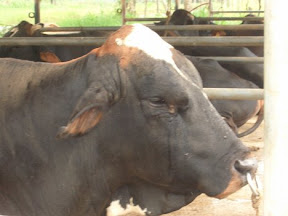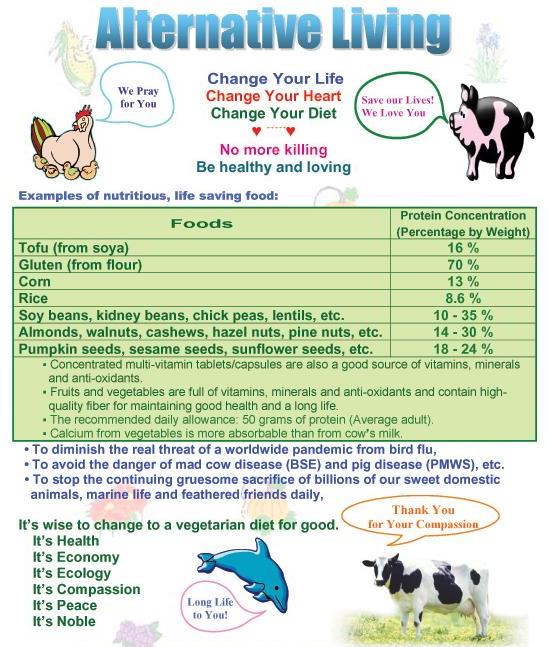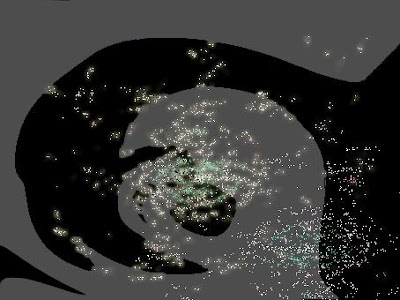
1 Cup Orange Juice
1/2 Cup Oil
1/2 Cup Dark Brown Sugar, Packed
1/2 Teaspoon Salt
2 Cups Light Spelt Flour (or Whole Wheat Pastry Flour)
1 Teaspoon Baking Powder
1/2 Teaspoon Baking Soda
1/2 Cup Rolled Oats
1/4 Cup Dutch-Processed Cocoa Powder
1/4 Teaspoon Cinnamon (Optional)
1/2 Cup Fresh Red Currants
1/2 Cup Raspberries
1/2 Cup Semi-Sweet Chocolate Chunks or Chips
Why Vegan?
Veganism may be defined as a way of living which seeks to exclude, as far as possible and practical, all forms of exploitation of, and cruelty to, animals for food, clothing or any other purpose. In dietary terms it refers to the practice of dispensing with *all* animal produce - including meat, fish, poultry, eggs, animal milks, honey, and their derivatives.
Abhorrence of the cruel practices inherent in dairy, livestock and poultry farming is probably the single most common reason for the adoption of veganism, but many people are drawn to it for health, ecological, spiritual and other reasons.
"Land, energy and water resources for livestock agriculture range anywhere from 10 to 1000 times greater than those necessary to produce an equivalent amount of plant foods. And livestock agriculture does not merely *use* these resources, it *depletes* them. This is a matter of historical record. Most of the world's soil, erosion, groundwater depletion, and deforestation -- factors now threatening the very basis of our food system -- are the result of this particularly destructive form of food production" (Keith Akers, p. 81, "A VEGETARIAN SOURCEBOOK", 1989).
Vegan: excludes animal flesh (meat, poultry, fish and seafood), animal products (eggs and dairy), and usually excludes honey and the wearing and use of animal products (leather, silk, wool, lanolin, gelatin...). The major vegan societies all disallow honey, but some "vegans" still use it.
What's Wrong With Free Range Eggs?
In order to get laying hens you have to have fertile eggs and half the eggs will hatch into *male* chicks. These are killed at once or raised as table birds (usually these days in broiler houses) and slaughtered as soon as they reach an economic weight. So for every free-range hen happily scratching around the garden or farm who, if she were able to bargain, might pay rent with her daily infertile egg, a corresponding male from her batch is enduring life in a broiler house or has already been subjected to slaughter or thrown away to die.
Every year in Britain alone more than 35 million day-old male chicks are killed. They are mainly used for fertiliser or dumped in landfill sites. The hens are also culled as soon as their production drops. Also be aware that many sites classed as free range aren't really free range, they're just massive barns with access to the outside. Since the food and light are inside the chickens rarely venture outside.
What Can Be Substituted For Eggs?

- Ener-G Egg Replacer, which is make from potato starch, tapioca flour, leavening agents (calcium lactate (vegan), calcium carbonate, and citric acid) and a gum derived from cottonseed. It's primarily intended to replace the leavening/binding characteristics of eggs in baking, but it can be used for nonbaked foods and quiches.
- Alternative replacements (quantity per egg substituted for) 2 oz of soft tofu can be blended with some water and substituted for an egg to add consistency.
- Or try the same quantity of: mashed beans, mashed potatoes, or nut butters.
- 1/2 mashed banana
- 1/4 cup applesauce or pureed fruit
- One Tbsp flax seeds (found in natural food stores) with 3 Tbsp water can be blended for 2 to 3 minutes, or boiled for 10 minutes or until desired consistency is achieved to substitute for one egg.
- 1 tsp. soy flour plus 1 Tbsp. water to substitute for one egg.
Dairy cows are made pregnant yearly to ensure they produce adequate milk. In nature the calf would suckle for almost a year but nature, like the calf, is denied by the dairy industry.
Some calves may be separated from their dams on the first day of life; others might remain for just a few days. But as the inevitable by-products of relentless milk production each will have to endure one of several possible fates.
The least healthy bobby calves will be sent to market to be slaughtered for pet food; to provide veal for veal & ham pies; or for rennet to be extracted from their stomachs for cheesemaking.
Some females will be reared on milk substitutes to become dairy herd replacements and begin, at 18-24 months of age, the cycle of continual pregnancies.
Some will be sold at market at 1-2 weeks of age for rearing as beef in fattening pens and slaughtered after 11 months, often without sight of pasture.
Up to 80% of the beef produced in the UK is a by-product of the dairy industry. Over 170,000 calves die in the UK each year before they are three months old, due largely to neglectful husbandry and appalling treatment at markets.
A few will be selected for rearing as bulls, spending their lives in solitary confinement serving canvas 'cows' and rubber tubes. Artificial insemination is now responsible for 65-75% of all conceptions in the dairy herd.
In the US the vast majority of unwanted calves are reared for veal, all but around 12% of them spending their short miserable lives in narrow crates (5'x2') on wooden slats and without straw.
Whilst none suffer such a fate in Britain they are now exported for the purpose. In solitary confinement, unable to turn around or groom themselves they must drink the only diet they are allowed - a milk substitute gruel.
Deliberately kept short of the iron and fibre which would redden their fashionably white flesh, they will suffer from sub-clinical anaemia and gnaw at the crates and their own hair for the roughage they crave.
Fed large doses of hormones and antibiotics to promote growth and prevent the onset of infections caused by the stress of confinement and malnutrition, they will suffer scours, pneumonia, diarrhoea, vitamin deficiency, ringworm, ulcers or septicaemia.
After 14 weeks, barely able to walk, they are taken over long distances to slaughter.
In 1905 the Lord Mayor's Cup at the London Dairy Show was won by a 24 year old cow.
Today it is impossible to find a dairy cow of that age. The cow is usually sent for slaughter at five to six years, less than one quarter of their expected lifespan.
Ketosis, laminitis, rumen acidosis, bse, mastitis, milk fever, staggers, liverfluke, lungworm and pneumonia are just some of the diseases facing the short life of the dairy cow.
But Don't I Need Eggs And Dairy Products?
Just as the meat manufacturers would have you believe that you need to eat meat, the egg and dairy producers are now spending vast amounts of money promoting the healthy aspects of eggs and dairy products.
Eggs and dairy products contain large amounts of cholesterol and saturated fats, which is considered a major cause of heart disease.
In a 1985 study published by the J. Am. Med. Ass. dairy products were the major source of saturated fat and cholesterol for 75 adult vegetarians living in the USA, whose blood levels of cholesterol were higher than those of vegans who ate no dairy produce.
Dairy products contain lactose, a milk sugar which the majority of the world's population is actually unable to digest and is often found to be the cause of digestive problems.
Casein, the milk protein, has been shown to cause iron deficiency anaemia from internal bleeding in many infants and is suspected of causing juvenile diabetes.
Milk products can also be a cause of eczema, rash, mucous buildup, wheezing, asthma, rhinitis, bleeding, pneumonia and anaphylaxis in children and adults.
(Source: http://www.godsdirectcontact.com/, http://site.maggiescottage.com/; image by: http://blog.mysweetvegan.com/)

 http://www.lovinghut.com/
http://www.lovinghut.com/ Meat or vegetables? Independent online (SA)
Meat or vegetables? Independent online (SA)
 Vegetarian Shoes And Bags
Vegetarian Shoes And Bags Which Stars Are You From?
Which Stars Are You From?


No comments:
Post a Comment